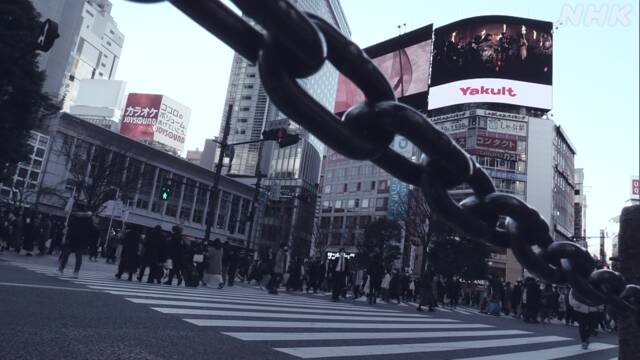It has been seven days and one year since the first state of emergency was declared in Japan following the spread of the new coronavirus infection.
We will look back on the infection situation from the two declarations of emergency to the current "priority measures such as prevention of spread".
Approximately three months after the first confirmation of infection in Japan, the government issued the first state of emergency to seven prefectures on April 7, last year.
The peak of the so-called first wave at this time was April 11, four days after the declaration was issued, and more than 700 infections were announced nationwide on one day.
After that, the number began to decrease, and the number decreased to around 20, and the declaration was lifted in all regions on May 25.
After that, the infection spreads again, and at the end of July, more than 1000 people a day will come to the second wave.
At the peak of August, the number of people exceeded 1,500, and local governments in each region requested refraining from shortening business hours and issued a state of emergency unique to the prefecture.
After that, the number of infections will decrease, but it will remain at a higher level than when the first state of emergency was declared, and will remain around 500 from September to October.
In this state, the so-called third wave was reached, and in January, the number of people exceeded 7,000, and on January 7, a second state of emergency was declared in each of the three prefectures.
The state of emergency in one city and three prefectures was lifted on March 21, but the number of people exceeded 1,000 on that day.
As the infection spreads and is suppressed, the next wave arrives at a higher level than before, and as a result, it can be seen that the new wave has become larger than the previous wave.
The infection is still on the rise, and since the end of last month, the number of people has exceeded 2,000, and the infection with the mutant virus is spreading.
On the 5th, "Priority measures such as spread prevention" were applied to the three prefectures of Osaka, Hyogo, and Miyagi.
If measures are not taken thoroughly, the fourth wave of concern may become even higher in the future, and the government and local governments are calling for cooperation in infection prevention.
Professor Wada, International University of Health and Welfare "It is also necessary to narrow down the area and call for countermeasures."
Regarding the situation where the infection of the new coronavirus is spreading, Professor Koji Wada of the International University of Health and Welfare, who is familiar with public health, said, "Although the situation varies depending on the region, there are many events such as welcome and farewell parties from the end of the year to the beginning of the year, and the number of people is high. Mutant strains, which are said to be highly infectious, are also entering the market. It is thought that the increase in the number of people due to the lifting of the emergency declaration has also had an effect. "
In particular, he said that the infection situation in Kansai, such as Osaka and Hyogo prefectures, to which priority measures such as spread prevention were applied, became severe, and that "priority measures such as spread prevention should be taken before the infection spreads significantly. I think that the timing was a little late this time due to the system that was created. Especially in Osaka, there are many mutant strains and the speed of infection spread is very fast, and the current situation where the medical system is strict is suddenly tightened without being fully communicated to the citizens. There is a risk that normal medical care will not be possible because it is awake. I think we are at a stage where we need to reduce the chances of contact, not just at restaurants, with measures similar to those declared an emergency. "
Regarding Miyagi Prefecture, where priority measures are also applied, "The number of effective reproductions, which is an indicator of how many people are infected from one infected person, tends to decrease gradually, but the number of seriously ill people increases. It is often more than a week or two after the number of infected people increases, and it is necessary to anticipate a situation in which the beds will become even tighter in the future. "
Regarding the situation in the Tokyo metropolitan area, "Although there is already a tendency to expand in Tokyo and other areas, it is thought that the impact of the increase in the number of people due to the cancellation of the state of emergency will appear as an increase in the number of infected people in the future. Therefore, the infection may spread more than ever and the situation may become more severe. "
On top of that, the countermeasures have continued for more than a year, and it has become difficult to obtain cooperation for infection countermeasures. Isn't it? It may lead to discrimination, so it is necessary to carefully consider how to call it, but by showing a specific area, you can take it more as yourself, and you can respond in detail according to the situation. I pointed out.

